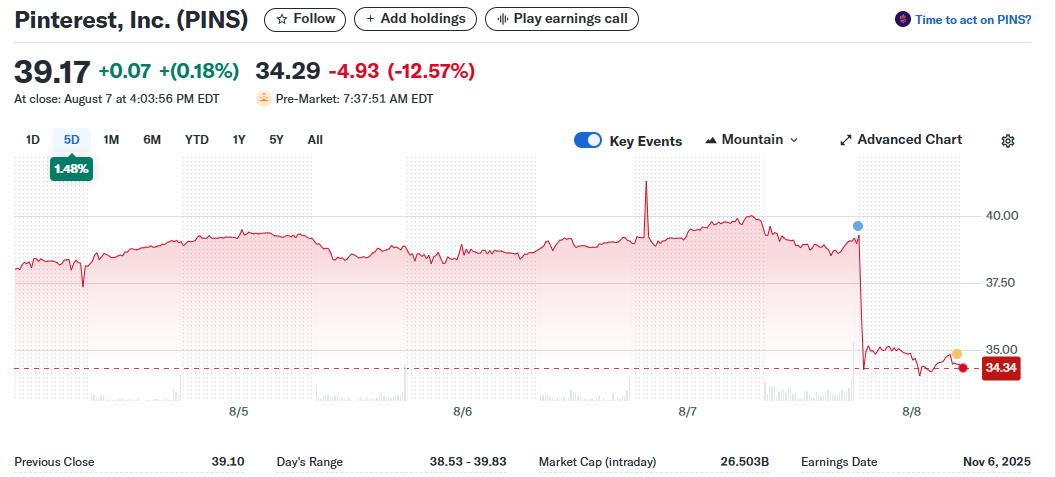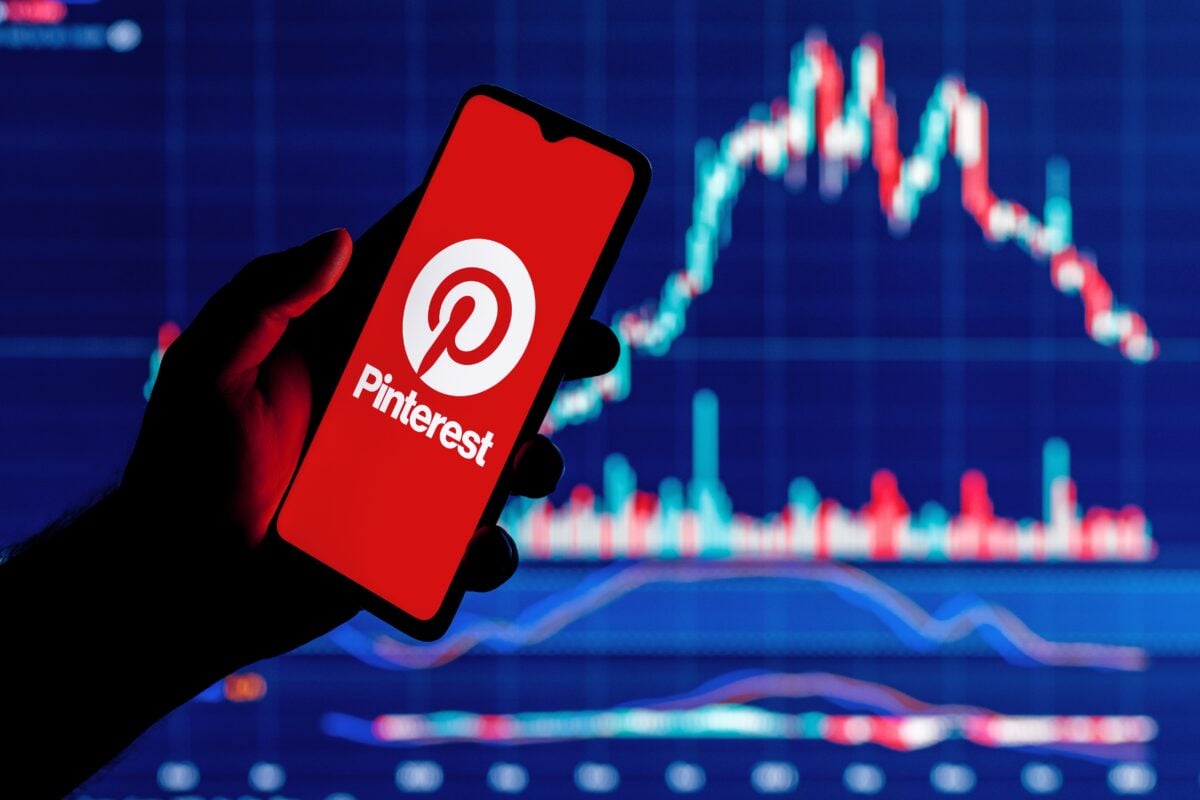TLDRs:
- Pinterest’s Q2 revenue rose 17%, beating forecasts despite a 12.57 % stock drop.
- Earnings per share missed estimates at $0.33 versus $0.35 expected.
- User growth hit 578 million monthly active users, surpassing projections.
- AI advertising tools promise efficiency but weigh on short-term profits.
Pinterest shares fell sharply by over 12.57% on Thursday, despite posting impressive year-over-year revenue growth of 17%.
The social media company reported adjusted earnings per share (EPS) of $0.33, falling short of analyst expectations of $0.35. However, revenue reached $998 million, surpassing the anticipated $975 million. This disconnect between strong top-line growth and a slight earnings miss triggered investor concerns, leading to the stock pullback.
Net income more than quadrupled to $38.8 million from $8.9 million a year prior, reflecting improving profitability on a yearly basis. Still, the failure to meet EPS forecasts, combined with rising costs, weighed heavily on market sentiment.

User Growth Strong, Monetization Still a Challenge
Pinterest’s global monthly active users (MAUs) climbed 11% to 578 million, beating estimates of 574.5 million. This growth was driven by successful international expansion and a demographic shift, with over 50% of the user base now made up of Gen Z users.
While growing the user base is critical, the company faces the common industry challenge of monetizing new users from international markets where advertising rates are typically lower.
The influx of users from outside the US has driven a 25% year-over-year decline in ad pricing, pressuring overall ad revenue quality. Pinterest’s experience highlights the delicate balance between expanding reach and maintaining robust monetization, a challenge shared by many social platforms scaling globally.
AI Ads Improve Efficiency, Hit Profits
Pinterest has been investing heavily in AI-driven advertising tools, notably its Performance+ suite. This technology reduces campaign creation time by 50% for mid-market advertisers, boosting efficiency and potentially attracting more ad dollars.
CEO Bill Ready emphasized the growing adoption of Performance+ as a competitive advantage in a crowded digital ad landscape.
Despite these advancements, the costs associated with implementing AI capabilities have weighed on near-term profits, contributing to the earnings miss. Investors will be watching closely to see if Pinterest can convert these upfront investments into sustainable profit growth in the coming quarters.
Market Maturity Signals and Strategic Focus Shift
Pinterest’s quarterly user additions slowed from 17 million in Q1 to 8 million in Q2, indicating the platform may be nearing saturation in core markets.
This slowdown mirrors patterns observed at other major social networks, prompting a strategic shift from pure user acquisition to maximizing revenue per user.
The company’s focus on AI-powered advertising automation reflects this pivot, aiming to increase monetization efficiency among existing users rather than relying solely on new user growth. With digital advertising budgets tightening globally, providing easier, AI-driven ad solutions for mid-market advertisers could become a key revenue driver.
That said, Pinterest forecasts third-quarter sales between $1 billion and $1.1 billion, ahead of some analyst estimates. While the company faces near-term profitability headwinds, its investments in AI and international user growth position it well for the longer term. How effectively Pinterest navigates these growth and monetization challenges will be crucial to restoring investor confidence and stock momentum.






